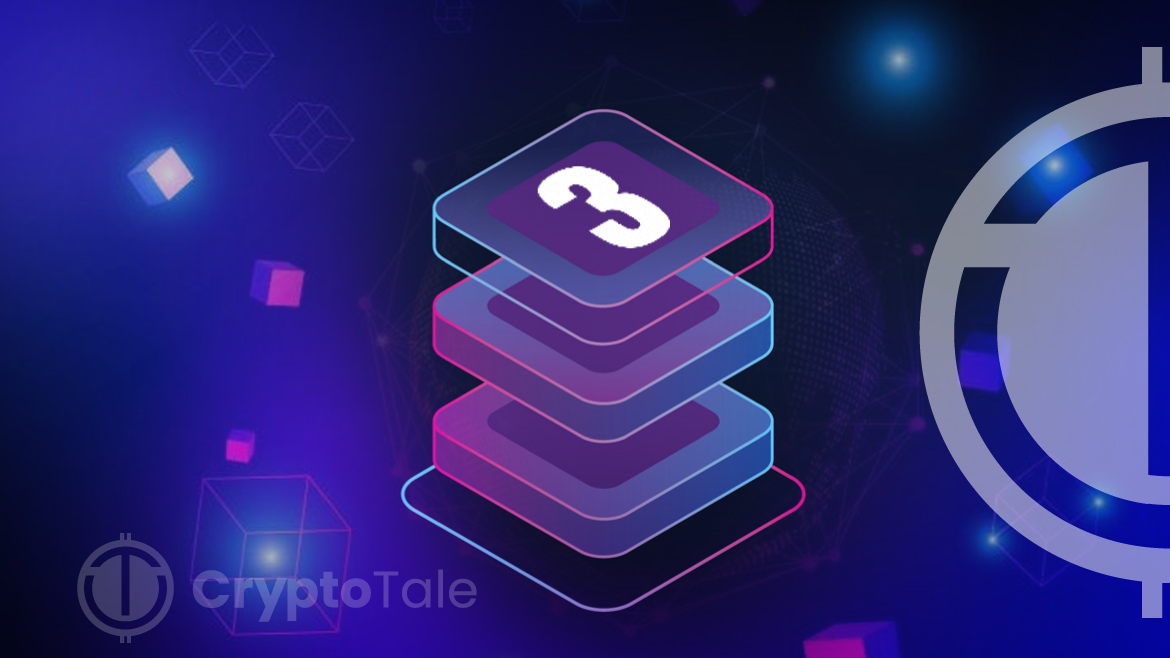
When new challenges arrive, a solution emerges. The increase in blockchain adoption, challenges in scalability, interoperability, and other issues led to the development of Layer 3 blockchains. Their emergence is vastly significant in the landscape of decentralized applications (dApps) and blockchain technology. While layers 1 and 2 laid the foundation for the blockchain, layer 3 promises to unlock its full potential. This article delves into the potential impacts of blockchain solutions.
Overview of Different Blockchain Layers
Layer 1: Base Chain Layer
Layer 1 is the bedrock or foundational layer of a blockchain network, encompassing key protocols and consensus mechanisms like Proof of Work (PoW) and Proof of Stake (PoS). It plays a vital role in validating transactions and creating blocks in blockchains like Bitcoin and Ethereum. This layer is where transaction processing and smart contract operations of a blockchain take place.
Layer 2: Protocol Layer
Layer 2 blockchains emerged to address the efficiency and scalability challenges encountered at Layer 1. These platforms are constructed atop Layer 1 blockchains and incorporate technologies such as sidechains and state channels. Operating off-chain, Layer 2 blockchains execute transactions outside the main chain, resulting in quicker and more cost-effective transactions. They periodically settle aggregated transactions on the Layer 1 blockchain, enhancing throughput and alleviating congestion.
Layer 3: Application Layer
Layer 3 blockchains represent a tailored approach to blockchain technology by focusing on customization and application-specific functionalities. They are built on top of layer 2, enabling increased scalability and interoperability. These blockchains can be customized to meet the developer’s unique requirements, whether for addressing privacy concerns or supporting high transaction volumes while maintaining security. This type of layer 3 network is designed to host individual decentralized applications (dApps).
What Are The Advantages of Layer 3 Blockchain?
- Scalability: Layer 3 was designed to offer scalability beyond the capabilities of layers 1 and 2. By allowing optimization of the network based on the requirements of the applications, the blockchain can handle more transactions and complex functionalities.
- Interoperability: A layer 3 network serves as a bridge between various decentralized applications, enabling seamless communication and data exchange among them. It contributes to building a more interconnected and interoperable ecosystem.
- Innovation: Because of the particularity of layer 3 networks, developers can deploy updates to their applications without worrying about affecting the underlying layer 1 blockchain. This allows developers to experiment with features or governance mechanisms at a faster rate, leading to accelerated innovation.
- Privacy and Security: Layer 3 protocols make isolating different applications within the network easier, enhancing privacy and security. dApps can incorporate privacy mechanisms or features based on their needs, safeguarding data and preventing illegal access.
- Customization: Layer 3 networks allow developers to customize the design, protocols, rules, and consensus mechanism based on the requirements of the decentralized application.
Use Cases of Layer 3 Blockchain
Layer 3’s ability to customize decentralized applications based on requirements allows for a wide range of potential use cases. Some of the use cases of Layer 3 include,
- DeFi: Layer 3 networks provide an ideal environment for decentralized financial (DeFi) applications, offering customizable capabilities to satisfy unique requirements. Developers have the freedom to change privacy options and features, which increases adaptability. Furthermore, Layer 3 networks are highly scalable, which is critical for handling the large transaction volume linked to real-time trading. Furthermore, these networks promote interoperability across multiple blockchain platforms, enabling seamless asset transfers between networks.
- Gaming: Layer 3 networks facilitate gaming applications’ handling of a larger volume of transactions at faster speeds by providing optimized dedicated blockchains. This enhances the in-game experience by reducing latency and improving overall performance. Additionally, the ability to process a large number of microtransactions efficiently on a dedicated blockchain helps lower transaction costs, ensuring cost-effectiveness for both developers and players.
- Supply Chain: Layer 3 networks provide an integrated strategy for improving supply chain operations. Enhanced transparency allows stakeholders to obtain an immutable record of every supply chain event in real time, promoting confidence and reducing the risk of corruption or mistakes. Improved traceability guarantees that commodities are accurately tracked throughout the supply chain, allowing for the verification of product authenticity and regulatory compliance. Furthermore, Layer 3 networks make inventory management easier by offering real-time visibility into stock levels, orders, and shipments.
Impact of Layer 3 Blockchain
Layer 3 blockchain technology offers a solution to the scalability issue faced by the dApps. It allows hosting dApps in dedicated blockchains, optimizing performance and throughput and improving overall efficiency.
Unlike layer 1, which handles multiple applications concurrently, layer 3 uses application-specific protocols and consensus mechanisms to enhance transaction and processing speeds. For instance, Orbs, a layer 3 blockchain, leverages security from layer 1, scalability from layer 2, and its smart contract deployment layer to execute EVM compliant smart contracts. This allows for efficient and faster execution of dApps.
Layer 3 revolutionizes transaction speed and fees by optimizing blockchain networks for single dApps. This reduces congestion and delays, leading to near-instantaneous confirmations and faster settlement times. Additionally, innovative fee models are introduced to enhance accessibility for users and improve overall user experience while mitigating high transaction costs.
Real-World Application Protocols of Layer 3 Blockchain
- ICON: This protocol serves as a bridge between various blockchains and payment systems, expanding the scope of interconnectivity. Through its unique Interchain Relay Protocol (IRP), it has positioned itself to seize opportunities within the Layer 3 market.
- Quant: Developed as a hub for linking various blockchain networks to enterprise-level software and servers as a bridge for interoperability.
- IBC Protocol: Inter Blockchain Communication (IBC) enables communication between different blockchain networks. It also allows the exchange of pivotal data and assets efficiently.
- Interledger Protocol: ILP is a flexible payment network designed to facilitate transactions between different blockchain networks and payment systems. It enables cross-chain transactions, enhancing efficiency and interoperability.
Conclusion
Layer 3 blockchain stands poised to revolutionize the crypto industry with its customizable approach. By tailoring rules and protocols based on their application, it fosters scalability, interoperability, innovation, privacy, and security. Layer 3 accelerates transaction speeds, mitigates congestion, and serves as a bridge between different blockchain networks. Its potential to transform various industries could be a precursor to an era of efficiency and connectivity in decentralized systems.














